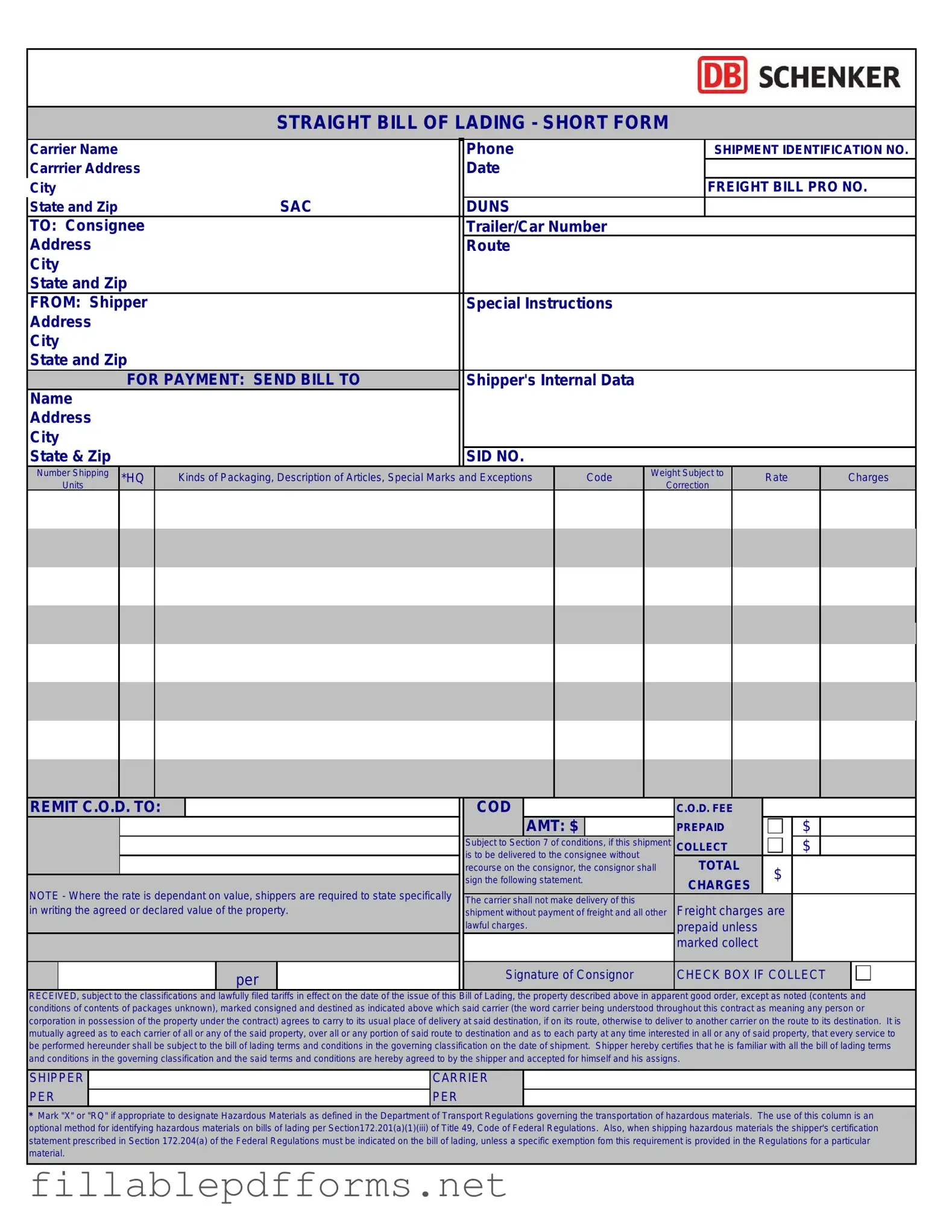The Straight Bill of Lading form plays a crucial role in the shipping and transportation industry, serving as a key document that outlines the terms of a shipment. This form is primarily used when goods are transported from one location to another, providing essential information about the sender, recipient, and the nature of the cargo. It is a receipt issued by the carrier, confirming that they have received the goods for transport. Unlike other types of bills of lading, the Straight Bill of Lading is non-negotiable, meaning it cannot be transferred to another party. This aspect ensures that the goods are delivered directly to the named consignee, enhancing security and reducing the risk of theft or misdelivery. Additionally, the form includes vital details such as the description of the goods, shipping instructions, and any special handling requirements. Understanding the nuances of this document is essential for anyone involved in shipping, as it helps facilitate smooth transactions and clear communication between all parties involved.
